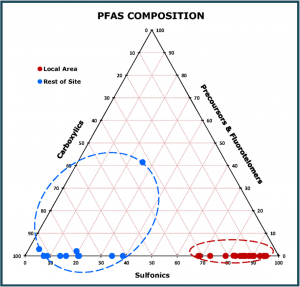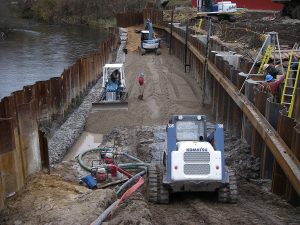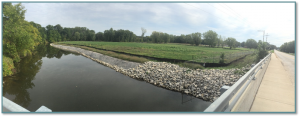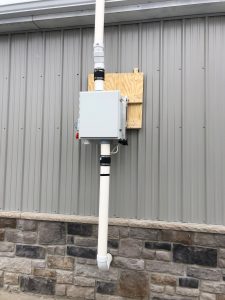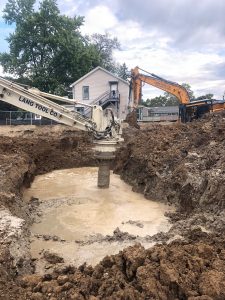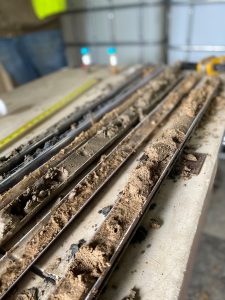PFAS Assessment & GSI Mitigation – Former Industrial Site
PROJECT SUMMARY
HMA was engaged in an environmental assessment of a former industrial site. HMA conducted groundwater sampling to define the distribution of PFAS in the subsurface. Groundwater samples displayed low-level PFAS distributed across the site and elevated concentrations in one localized area. Review of these data showed two distinctive compositions. The broad, low-level concentrations were dominated by perfluoroalkyl carboxylic acids, whereas the localized higher concentration area was primarily perfluoroalkane sulfonic acids.
The area with higher PFAS concentrations affected a shallow aquifer, exceeding the PFOS Michigan Part 201 Groundwater-Surface Water Interface (GSI) Criterion of 12 ng/L. Soil sampling in this area of concern failed to identify a specific, nor significant, source of the PFAS impact. PFOS and PFHxS dominated plumes are indicative of an electrochemically synthesized AFFF.
HMA reviewed various remedial technologies to mitigate the PFAS in the shallow aquifer, with the goal of reducing concentrations and assuring compliance at the GSI for PFOS. Due to moderate concentrations of PFAS identified in groundwater and no indication of a broad source in the soil matrix, injection of nanosized colloidal activated carbon (CAC) was proposed. In collaboration with Regenesis®, the CAC would allow passage of groundwater but would adsorb and retard PFAS for possibly 30 years without breakthrough.
With the CAC sorption zone in place, the groundwater quality down gradient has improved as clean water flushes through the aquifer toward the water body. HMA assessed PFAS mass flux and pore water dilution within the aquifer matrix to show progress toward GSI compliance. The sequestration of PFAS within the CAC sorption zone, followed by pore water flushing of the affected aquifer, is expected to provide long-term protection for the GSI and meet site objectives within 2-3 years.
PROJECT HIGHLIGHTS
- Performed soil and groundwater PFAS sampling using EGLE, ASTM, and ITRC guidance.
- Identified localized PFOS GSI exceedance in groundwater migrating towards GSI.
- Evaluated feasibility of various GSI mitigation remedies.
- Determined that CAC injection with Regenesis® was the best mitigation option.
- Performed CAC injections and are now monitoring remedy performance to achieve compliance.
